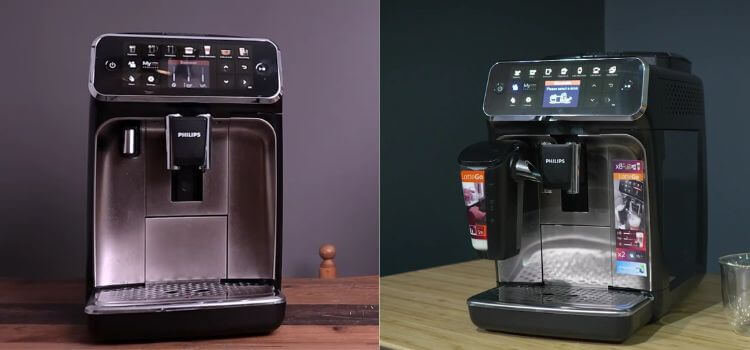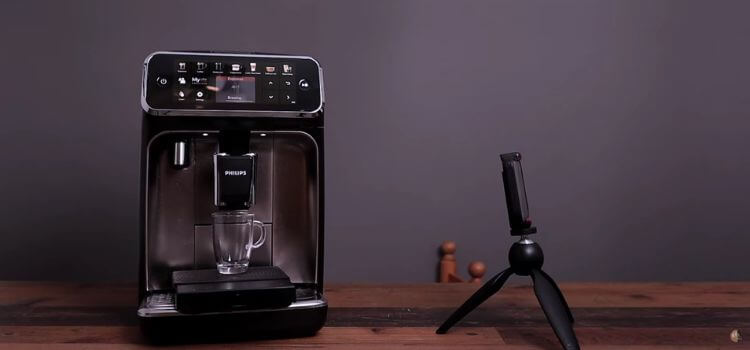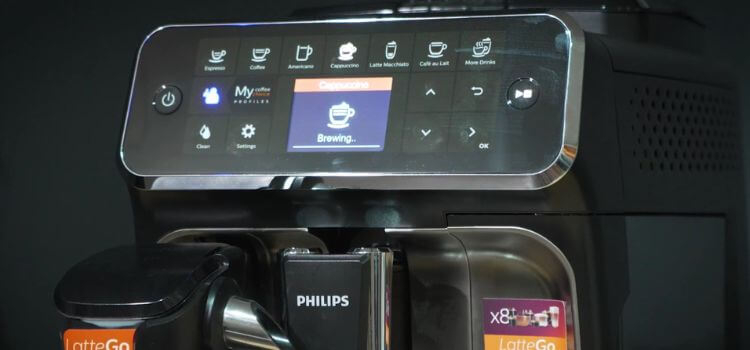As an Amazon Associate, I earn from qualifying purchases

In the world of home coffee brewing, the choice of an espresso machine can significantly improve the quality of your daily cup of joe. Philips is a renowned name in kitchen appliances, so comparing the Philips Espresso Machine 5400 and 4300 is a topic of great interest for coffee enthusiasts.
In this article, we delve into the features, performance, and overall value offered by these two espresso machines to help you make an informed decision about which one best suits your brewing needs. Grab your favorite mug, relax, and delve into the intricacies of these two remarkable coffee makers.
Design and Build Quality
When it comes to design, the Philips Espresso Machine 5400 and 4300 have sleek, modern appearances. Their small footprint makes them ideal for compact kitchens or countertops with limited space.
The 5400 features a stainless steel exterior with a glossy black finish, while the 4300 boasts a more understated brushed stainless steel look. Both machines have a similar layout and interface, with a simple control panel and an adjustable spout for different cup sizes.
Both machines exhibit excellent build quality, conveying a sense of sturdiness and craftsmanship. However, the 5400 has a slightly more robust construction due to its stainless steel casing compared to the plastic exterior of the 4300.
User Interface and Ease of Use
Both the 5400 and 4300 have a user-friendly interface that makes operation easy. The primary distinctions emerge from the varying degrees of customization options offered on each machine.
The 5400 offers more control over the brewing process, with options to adjust the strength and temperature of your coffee and pre-programmed settings for various speciality drinks like cappuccinos and lattes. On the other hand, the 4300 has a simpler interface with fewer customizable options but still delivers excellent coffee at the touch of a button.
Features and Functionality

The Philips Espresso Machine 5400 and 4300 share many features that contribute to their impressive performance. Both models use a high-pressure pump to extract maximum flavour from coffee grounds, and they offer adjustable settings for grind size and strength.
However, the 5400 has a slight advantage in terms of features. It comes with a built-in milk frother that allows for easy preparation of creamy and delicious cappuccinos and lattes. The 4300, on the other hand, requires a separate milk frother attachment. Additionally, the 5400 has a built-in water filter to ensure the purest quality of water for your coffee.
Brewing Capabilities
Both the Philips Espresso Machine 5400 and 4300 have advanced brewing capabilities that result in a rich, flavorful cup of coffee. The high-pressure pump ensures a consistent flavour extraction from the coffee grounds, while the adjustable settings allow for a personalized brewing experience.
However, the 5400’s milk frother and water filter give it an edge over the 4300 in terms of versatility and overall coffee quality. The 4300 still delivers excellent coffee, but the 5400’s additional features make it a more well-rounded machine.
Espresso Quality and Customization Options
Regarding the quality of espresso, both machines offer a smooth and rich taste. However, the 5400’s milk frother allows for a creamier, more professional-looking foam on your coffee. The customization options on the 5400 also give users more control over their drink preferences, while the 4300 offers a simpler but equally satisfactory brewing experience.
Performance and Speed

Both the Philips Espresso Machine 5400 and 4300 have impressive brewing times of around 1-2 minutes, making them quick and convenient options for busy mornings. The warm-up period is remarkably quick, requiring just a few seconds to achieve the desired temperature.
Both machines deliver consistent results with every cup. However, the additional features on the 5400, such as the milk frother and water filter, may contribute to a slightly more consistent taste compared to the 4300.
Maintenance and Cleaning
A crucial factor to consider when purchasing an espresso machine is the ease of maintenance and cleaning. The 5400 and 4300 have removable parts that can be easily cleaned, such as the drip tray and water tank.
However, the 5400 has a more advanced self-cleaning system that flushes out the remaining coffee grounds after each use, while the 4300 requires manual cleaning. Additionally, the 5400’s water filter needs to be replaced every few months, adding an extra step to maintenance but ensuring a higher quality of coffee.
Value for Money
Overall, the Philips Espresso Machine 5400 and 4300 offer excellent value for their price ranges. The 5400 may have a higher initial cost due to its additional features, but it also offers more customization options and slightly better performance than the 4300.
For those who prioritize simplicity and convenience, the 4300 is still a great option for a high-quality cup of coffee. However, for those who want more control over their brewing process and are willing to invest in additional features, the 5400 may be worth the extra cost.
Conclusion
In summary, the Philips Espresso Machine 5400 and 4300 are top-performing coffee makers with sleek designs and impressive features. While the 5400 may have an edge in versatility and customization options, the 4300 still delivers excellent results at a more affordable price.
Ultimately, the choice between these two exceptional machines boils down to individual preferences and brewing requirements. So, if you’re in the market for a reliable, high-quality espresso machine, the Philips Espresso Machine 5400 and 4300 are excellent choices that won’t disappoint. Happy brewing!
As an Amazon Associate, I earn from qualifying purchases